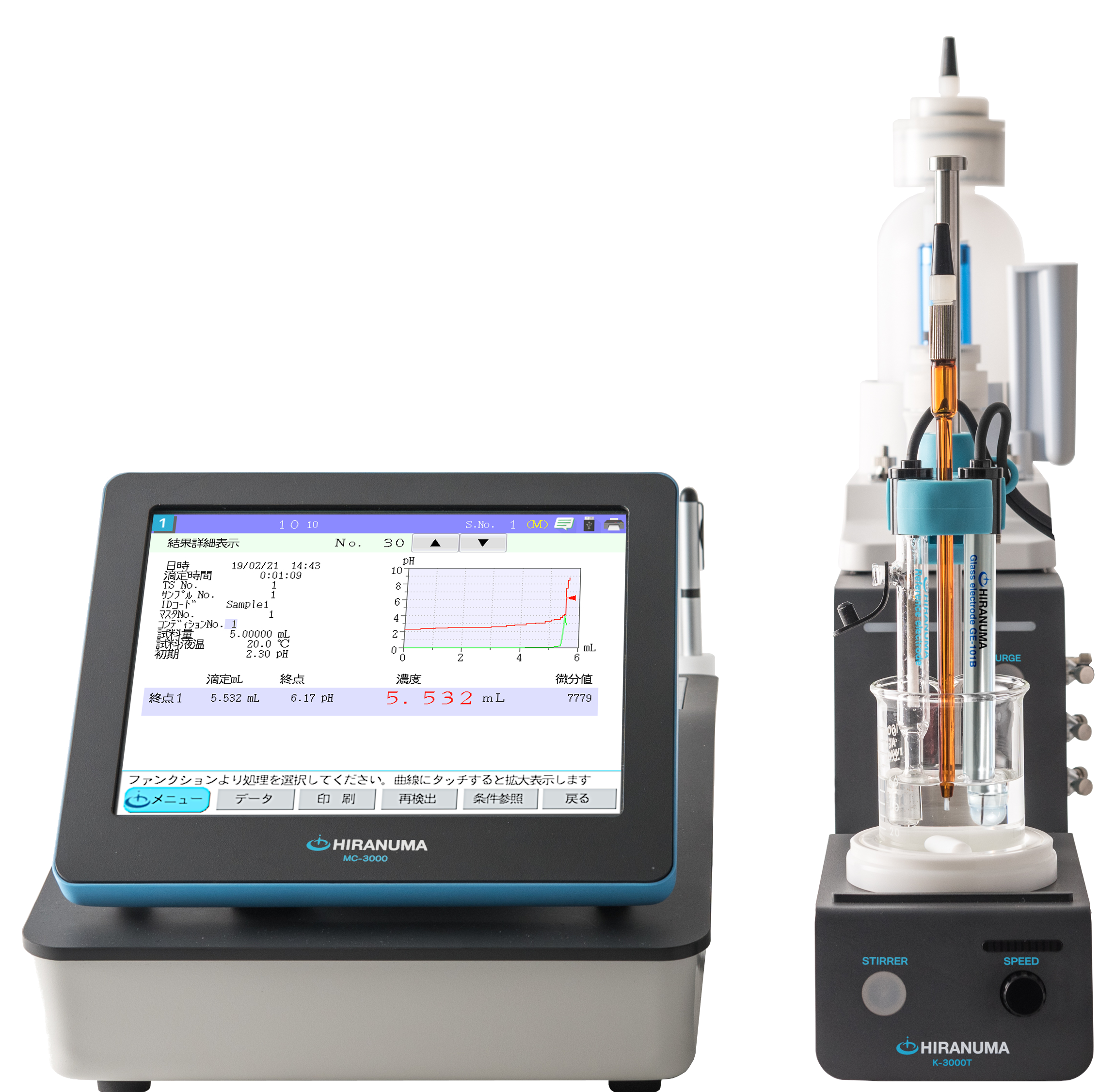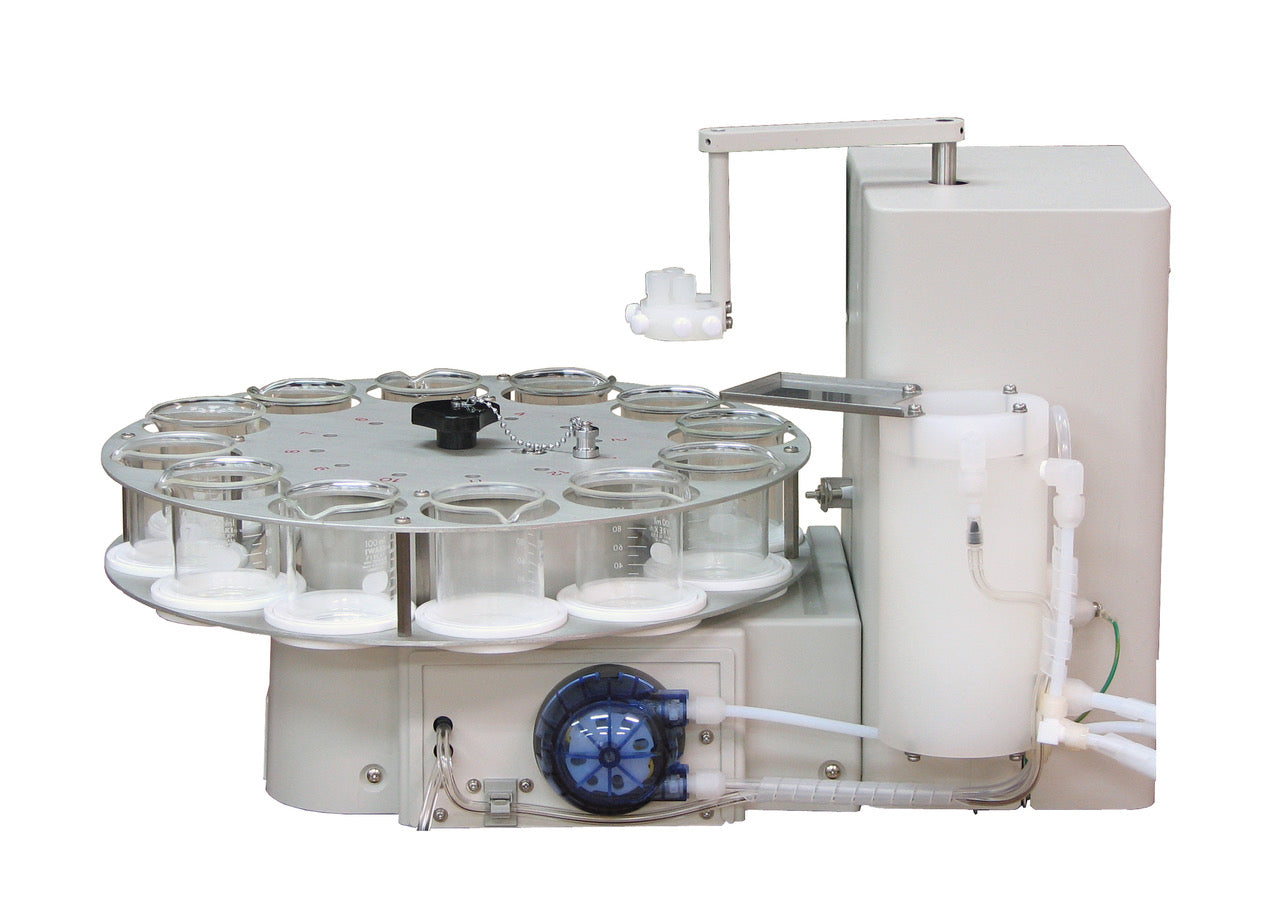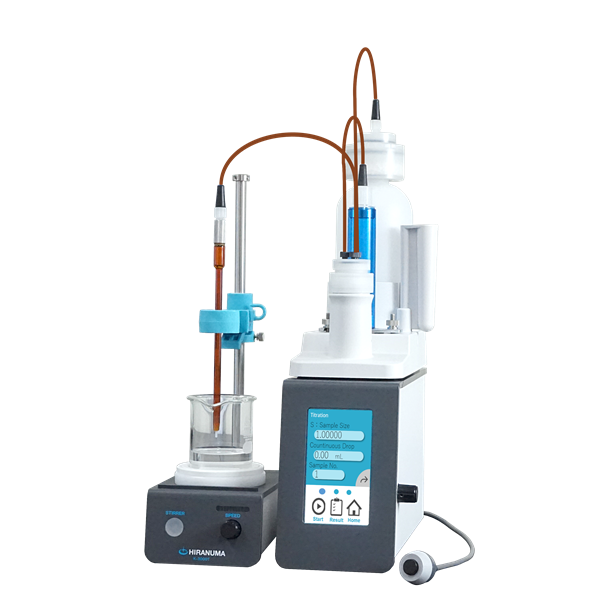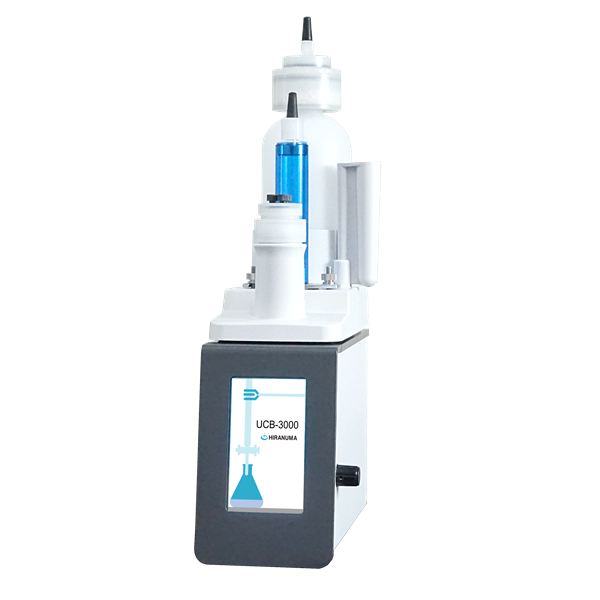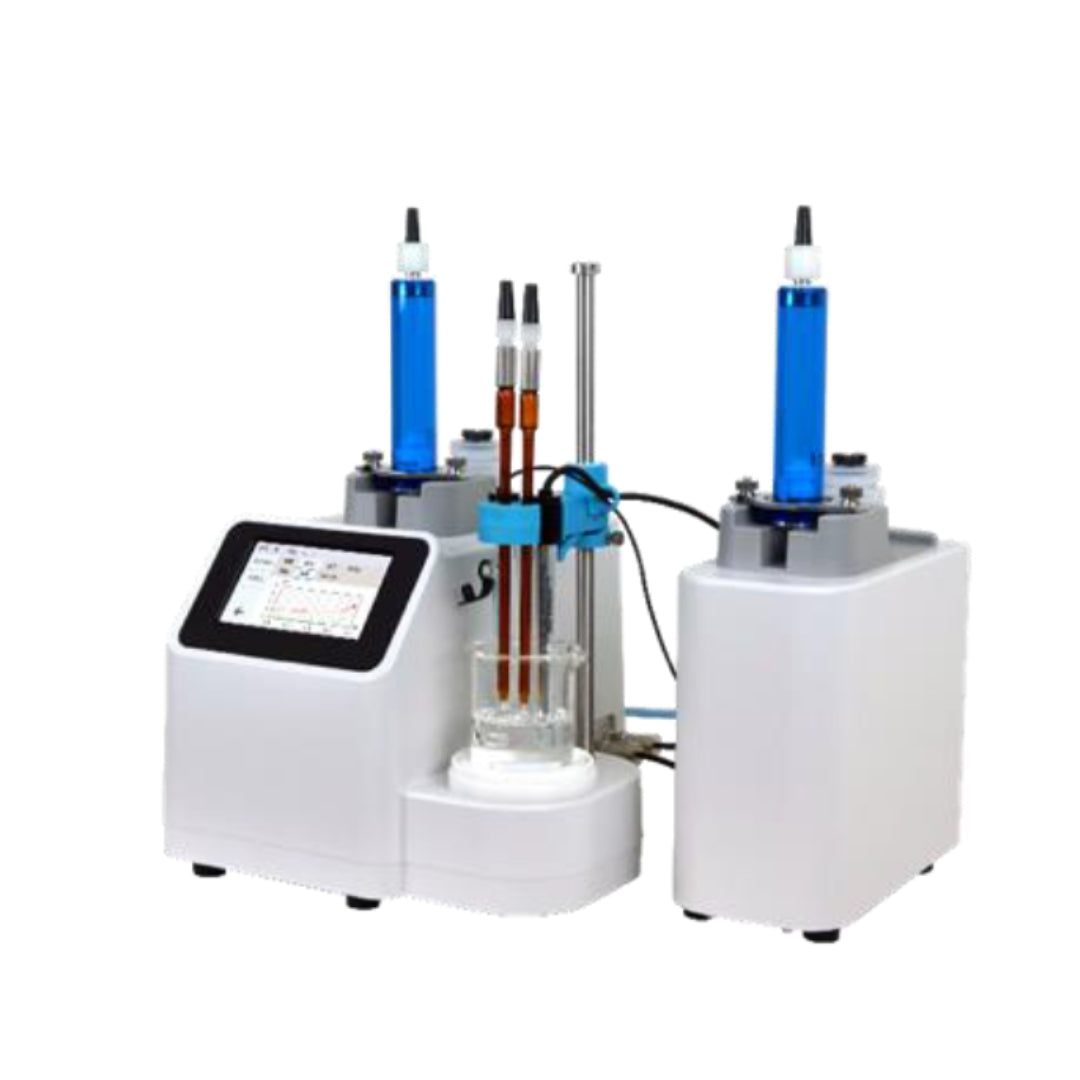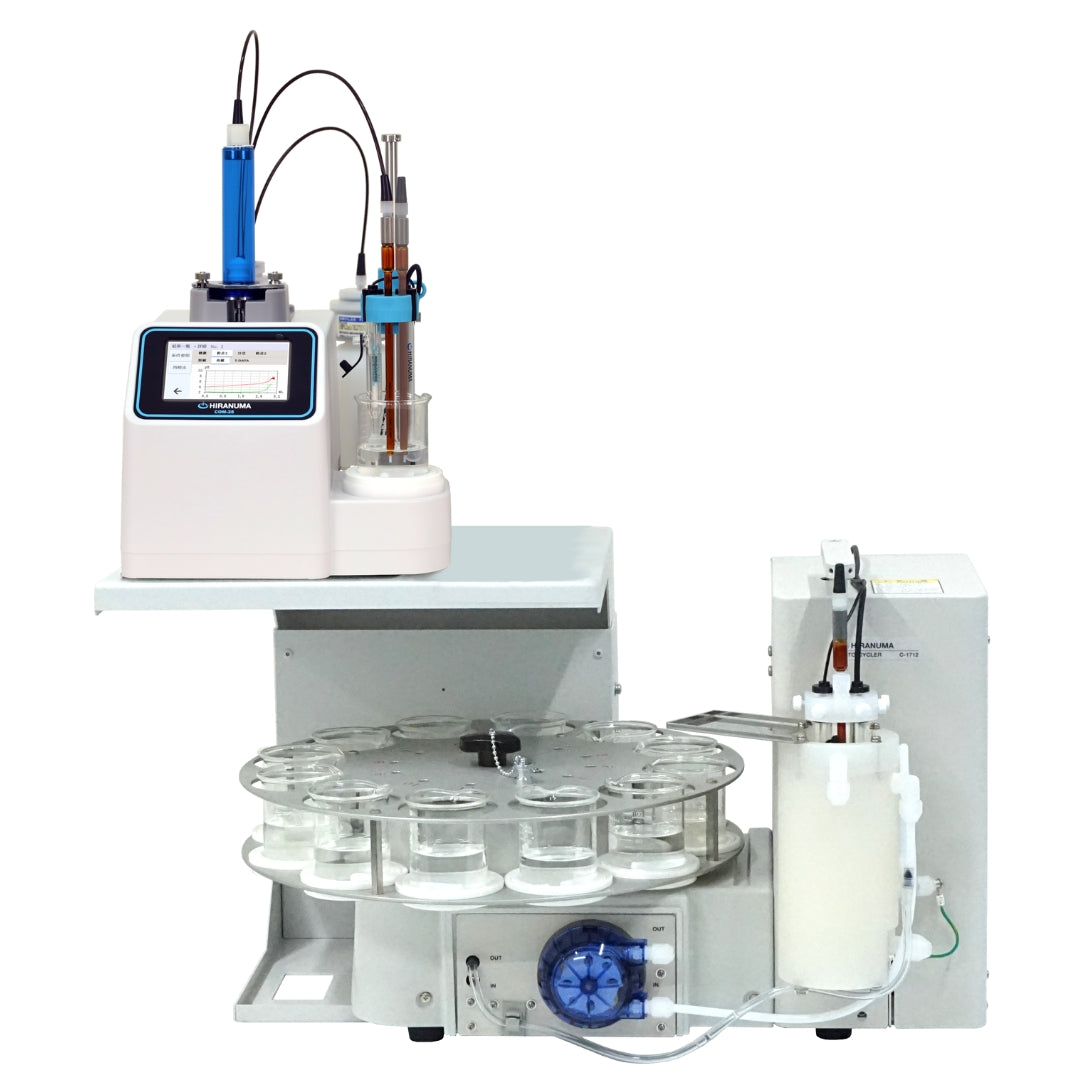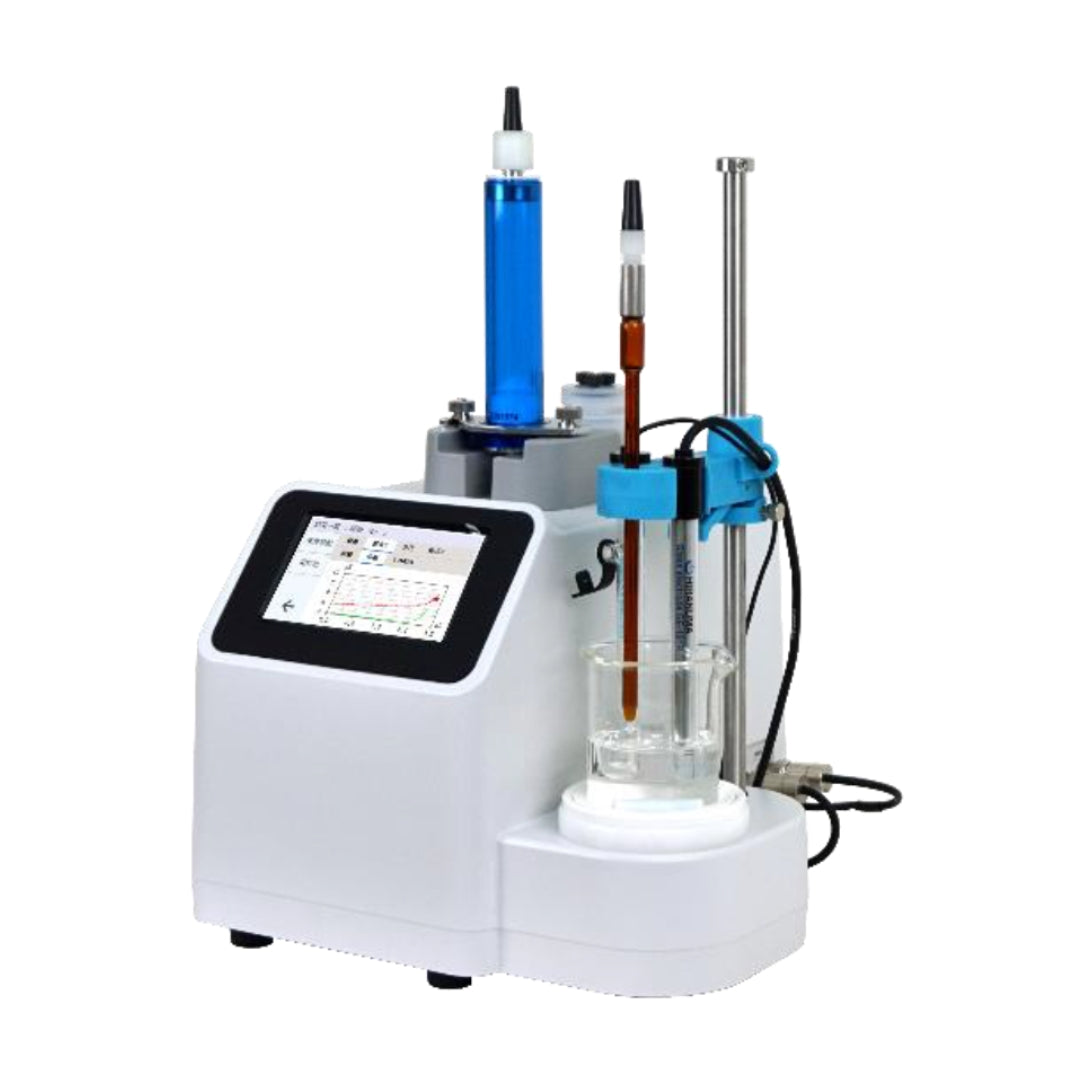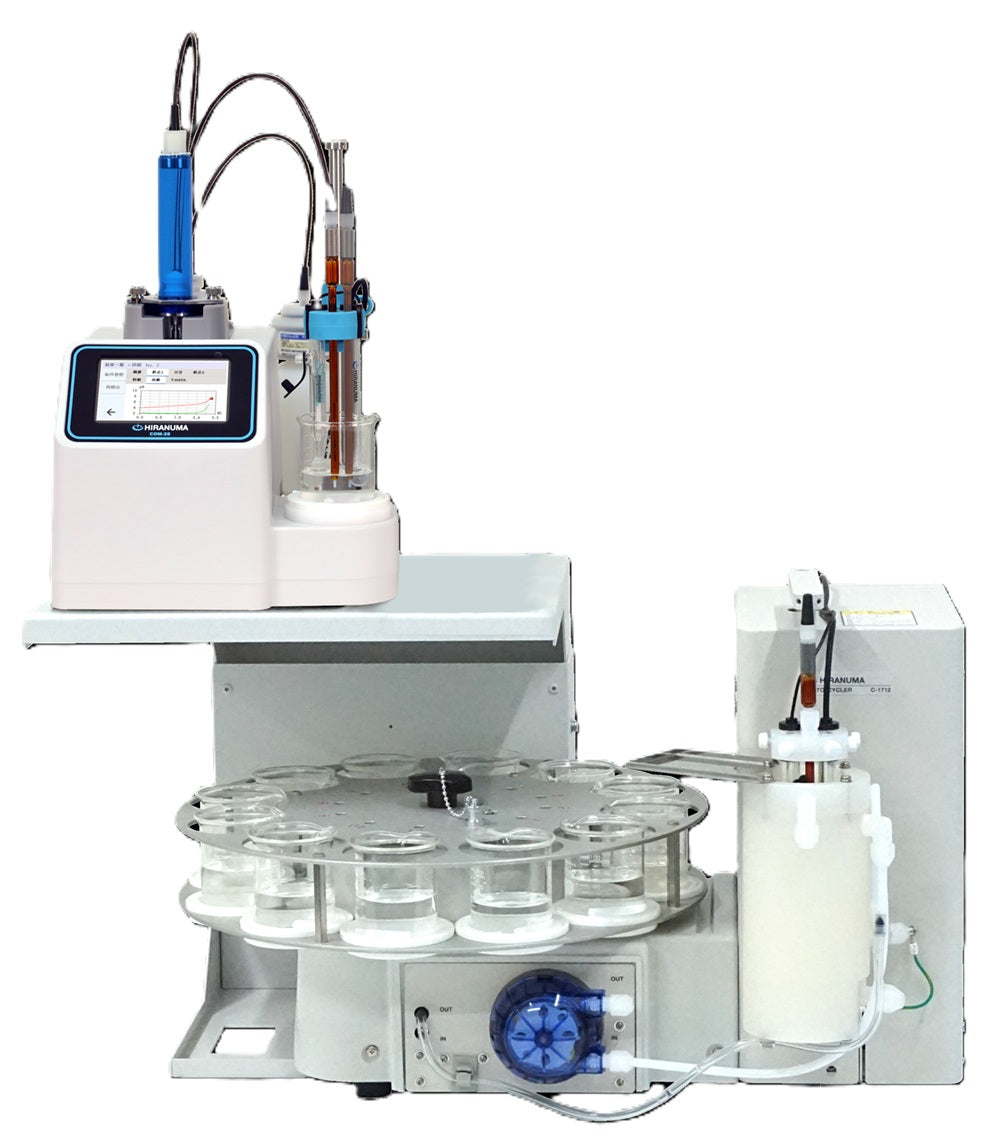| HIRANUMA APPLICATION DATA | Automatic Titrator | Data No. | J11 | Feb.10,2021 |
| Inorganic acids & Mixed acids | Fractional determination of nitric acid and phosphoric acid |
1. Abstract
The mixed solution of nitric acid and phosphoric acid works as strong acid, and also has the strong oxidizability and solvency. It is used as the surface treatment solution for metals, glass products, and semiconductors.
This report introduces an example of the fractional and successive determination for nitric acid and phosphoric acid by neutralization titration with sodium hydroxide standard solution. When nitric acid and phosphoric acid are titrated by neutralization titration using a glass electrode for pH measurement, two inflection points appear on the titration curve. The first inflection point appears as the total amount of nitric acid and phosphoric acid (reaction formula (1) and (2)). Sodium dihydrogen phosphate, which is the product of reaction equation (2), subsequently reacts with sodium hydroxide and shows an inflection point in the second stage (reaction equation (3)). Therefore, it is possible to obtain the phosphoric acid concentration from the second inflection point, and nitric acid concentration could be obtained with subtracting titration volume at the second inflection point from the first inflection point.
| HNO₃ + NaOH → NaNO₃ + H₂O | ・・・(1) |
| H₃PO₄ + NaOH → NaH₂PO₄ + H₂O | ・・・(2) |
| NaH₂PO₄ + NaOH → Na₂HPO₄ + H₂O | ・・・(3) |
2. Configuration of instruments and Reagents
| (1) | Configuration of instruments | ||
| Main unit | : | Automatic Titrator COM series | |
| Electrodes | : | Glass electrode GE-101B (Connect to IE-1) Reference electrode RE-201Z (Connect to RE-1) |
|
| (2) | Reagents | ||
| Titrant | : | 1 mol/L Sodium hydroxide standard solution (For volumetric analysis) | |
3. Measurement procedure
| (1) | Take 1 mL of sample into a 100 mL beaker with a micropipette and accurately weigh it. |
| (2) | Add 50 mL of DI water and a stirrer bar. |
| (3) | Immerse electrodes and titrate with 1 mol/L sodium hydroxide standard solution until second inflection point is detected. |
4. Measurement conditions and results
Examples of titration conditions
(1) Titration condition for total acid
| Cndt No | 6 | |
| Method | Auto | |
| Buret No. | 1 | |
| Amp No. | 1 | |
| D. Unit | pH | |
| S-Timer | 0 | sec |
| C.P. mL | 0 | mL |
| T Timer | 0 | sec |
| D.P. mL | 0 | mL |
| End Sens | 500 | |
| Over mL | 0 | mL |
| Max Vol. | 40 | mL |
| Constant No. | 6 | |
| Size | 0 | g |
| Blank | 0 | mL |
| Molarity | 1 | mol/L |
| Factor | 1.005 | |
| K | 63 | |
| L | 0 | |
| Unit | mL | |
| Formula | D | |
| Digits | 3 | |
| Mode No. | 4 | |
| Pre Int | 0 | sec |
| Del K | 9 | |
| Del Sens | 0 | mV |
| Int Time | 3 | sec |
| Int Sens | 3 | mV |
| Brt Speed | 2 | |
| Pulse | 40 |
(2) Titration condition for phosphoric acid
| Cndt No | 7 | |
| Method | Auto | |
| Buret No. | 1 | |
| Amp No. | 1 | |
| D. Unit | pH | |
| S-Timer | 0 | sec |
| C.P. mL | 0 | mL |
| T Timer | 0 | sec |
| D.P. mL | 0 | mL |
| End Sens | 500 | |
| Over mL | 0.3 | mL |
| Max Vol. | 20 | mL |
| Constant No. | 7 | |
| Size | 0 | g |
| Blank | 0 | mL |
| Molarity | 1 | mol/L |
| Factor | 1.005 | |
| K | 98 | |
| L | 0 | |
| Unit | % | |
| Formula | (VB-B)*K*F*M/(S*10) | |
| Digits | 3 | |
| Mode No. | 8 | |
| Pre Int | 0 | sec |
| Del K | 5 | |
| Del Sens | 0 | mV |
| Int Time | 5 | sec |
| Int Sens | 3 | mV |
| Brt Speed | 2 | |
| Pulse | 40 | |
(3) Calculation for nitric acid
| Cndt No | 8 | |
| Method | Calc | |
| Constant No. | 8 | |
| Size | 0 | g |
| Blank | 0 | mL |
| Molarity | 1 | mol/L |
| Factor | 1.005 | |
| K | 63.01 | |
| L | 0 | |
| Unit | % | |
| Formula | (VA-VB)*K*F*M/(S*10) ※ | |
| Digits | 3 | |
Measurement results
| Number of measurement |
Sample size(g) |
Total acid Titrant Volume(mL) |
Phosphoric acid Titrant volume(mL) |
Conc. (%) |
Nitric acid Conc. (%) |
|---|---|---|---|---|---|
| 1 | 1.4508 | 10.501 | 8.243 | 55.959 | 9.9018 |
| 2 | 1.4511 | 10.554 | 8.294 | 56.294 | 9.7836 |
| 3 | 1.4609 | 10.562 | 8.298 | 55.943 | 9.7890 |
| Avg. | 56.07 % | 9.82 % | |||
| SD | 0.20 % | 0.07 % | |||
| RSD | 0.4 % | 0.7 % |
Examples of titration curves

5.Note
If the sample contains metal ions, the formation of these hydroxide salts may consume the titrant.
Keywords: Nitric acid, Phosphoric acid, Fractional titration, Potentiometric titration, Neutralization titration
*Some measurement would not be possible depending on optional configuration of system.


